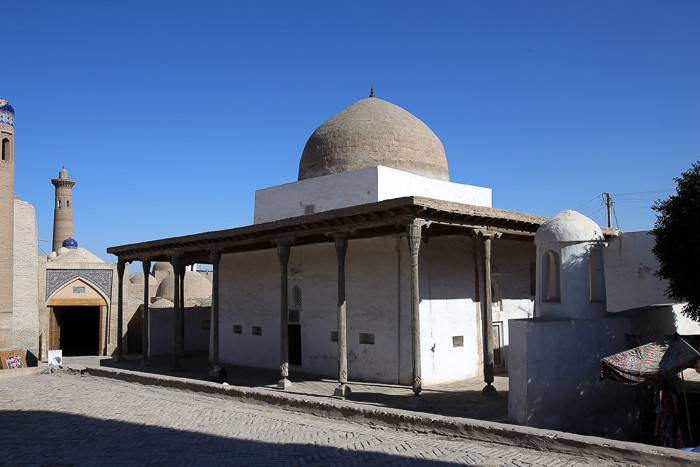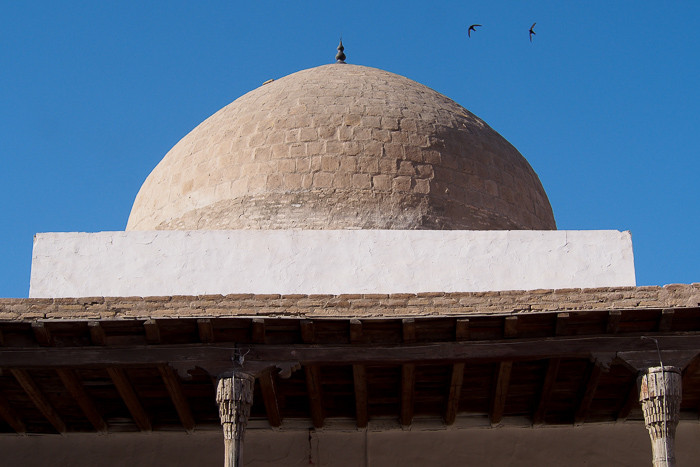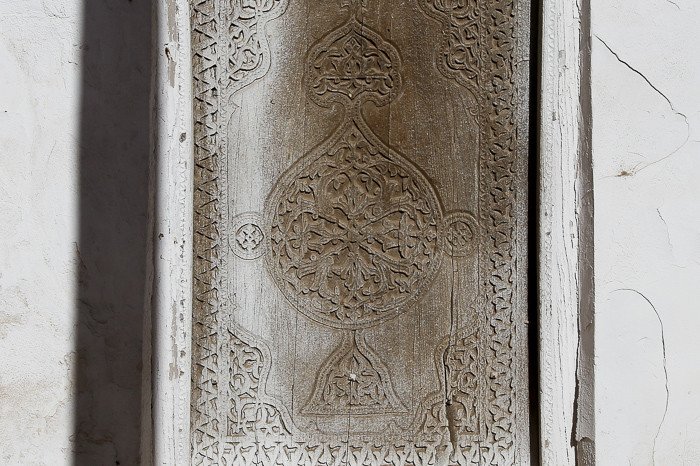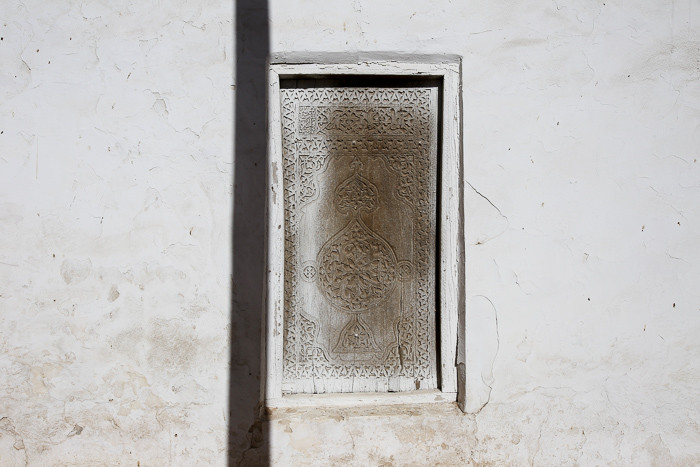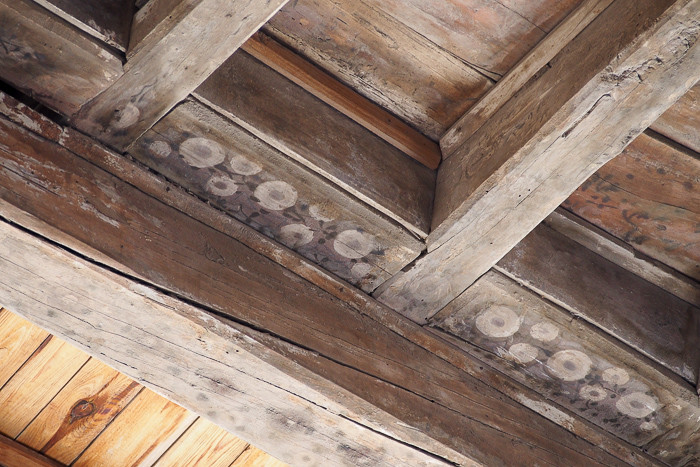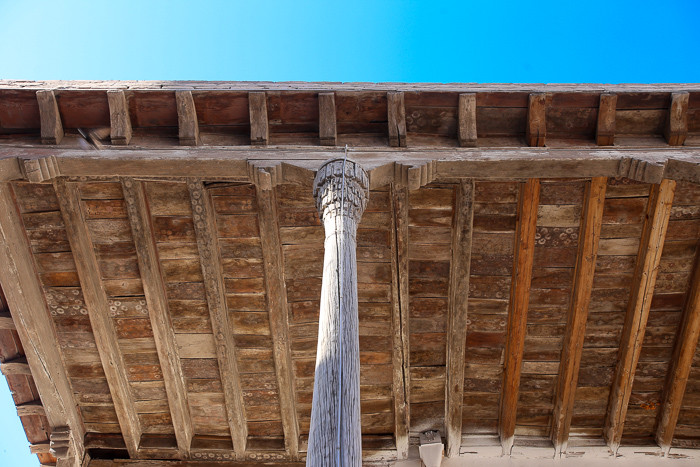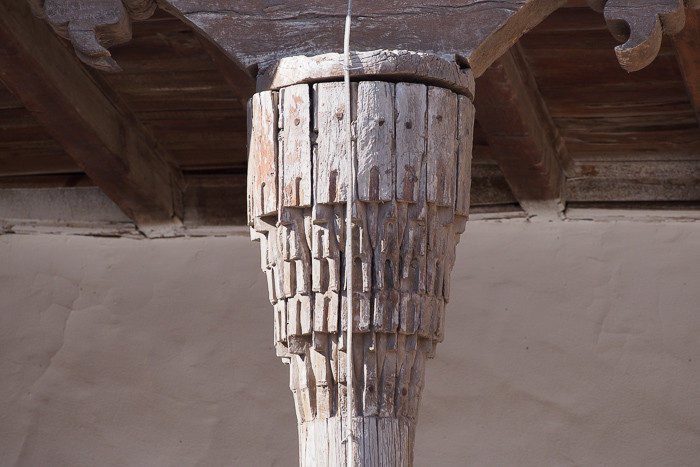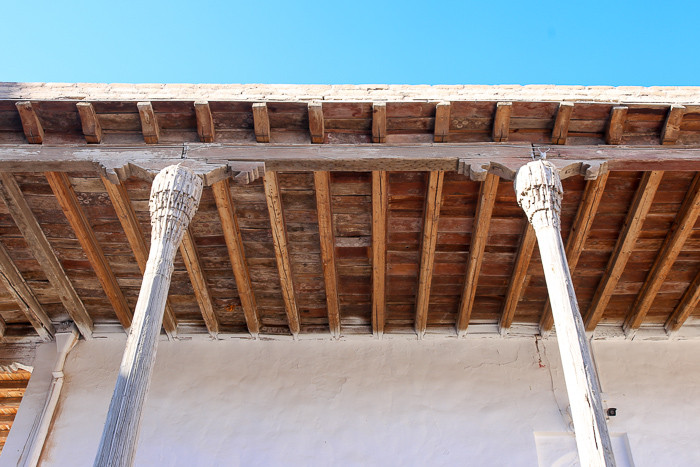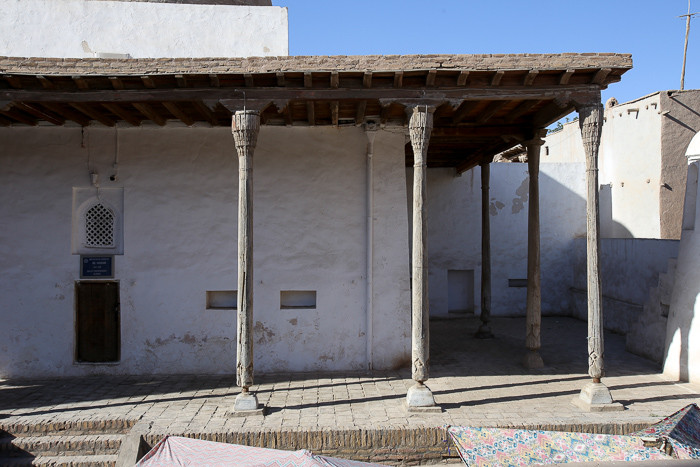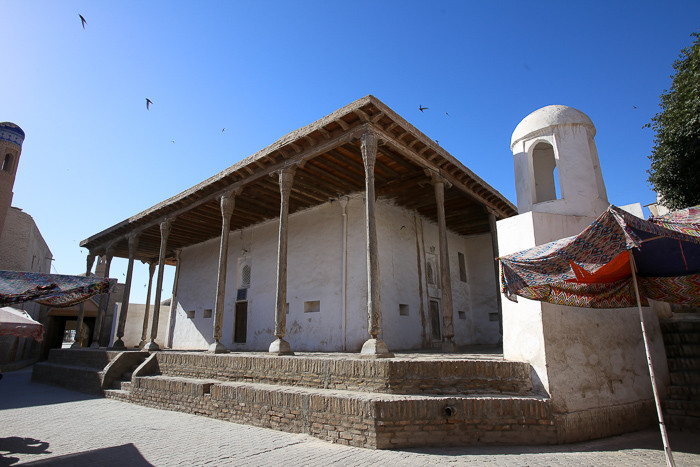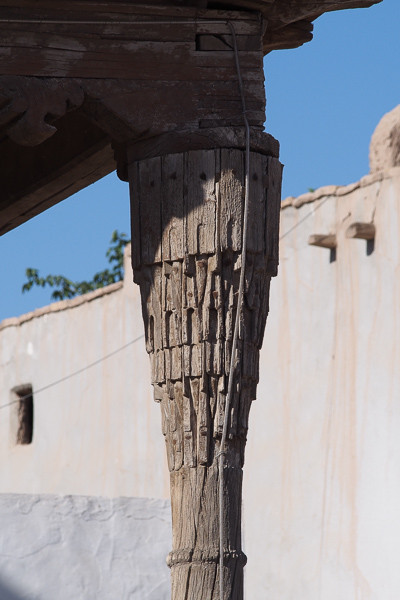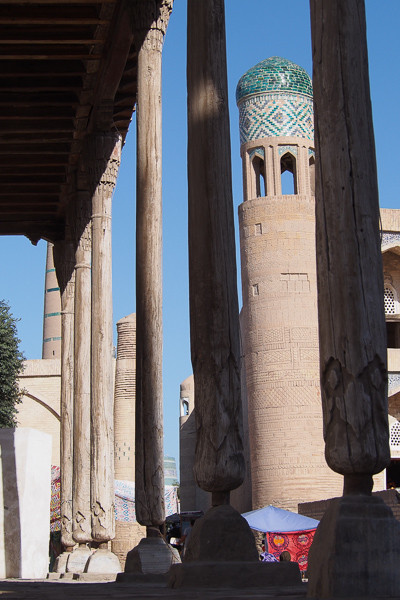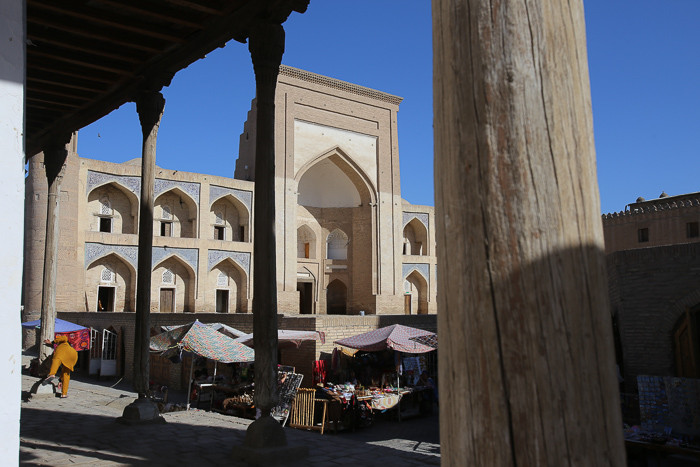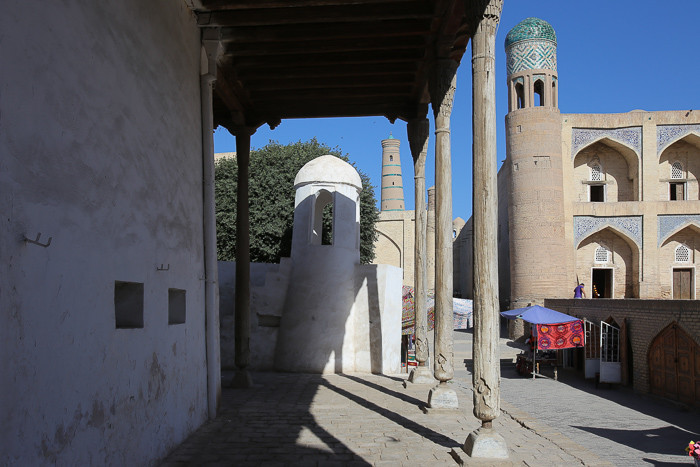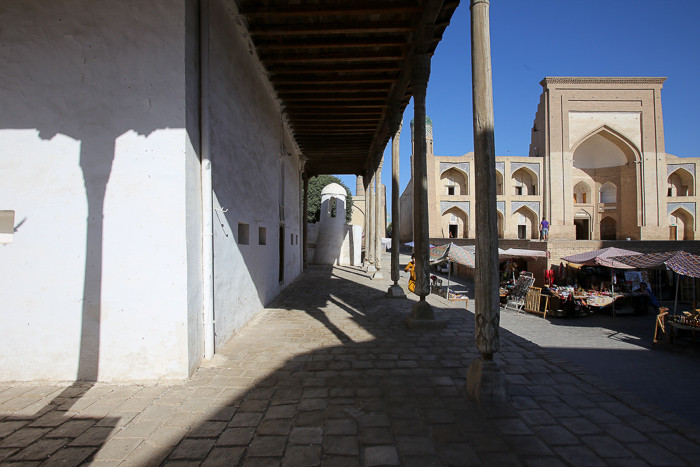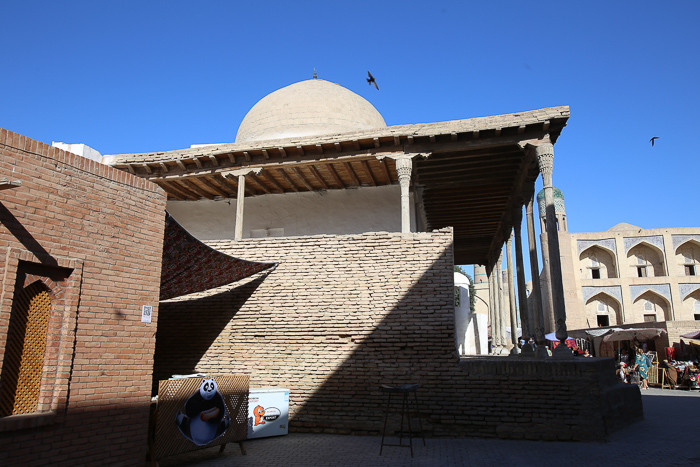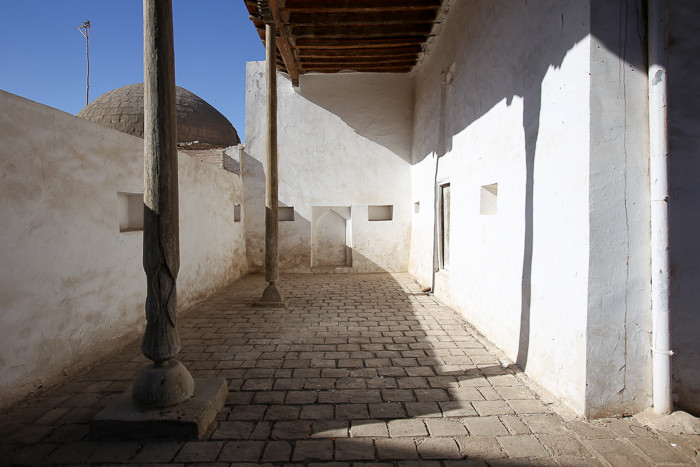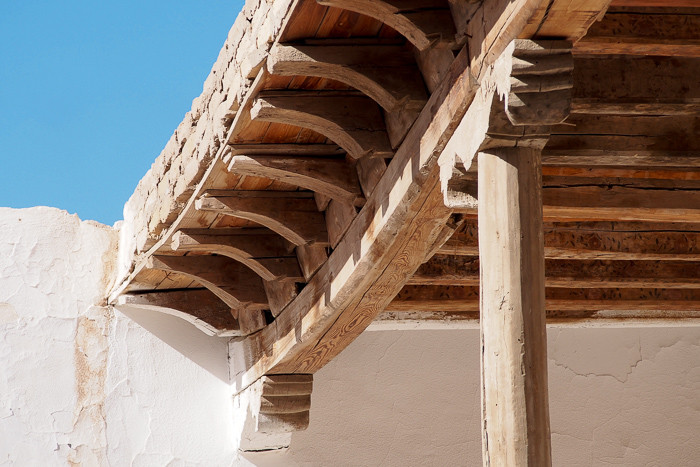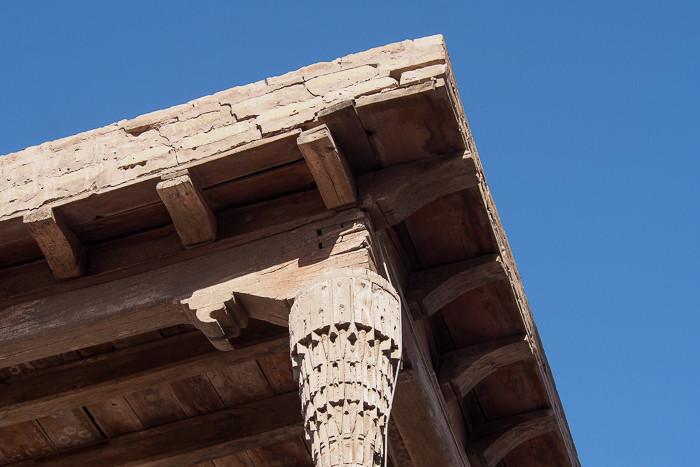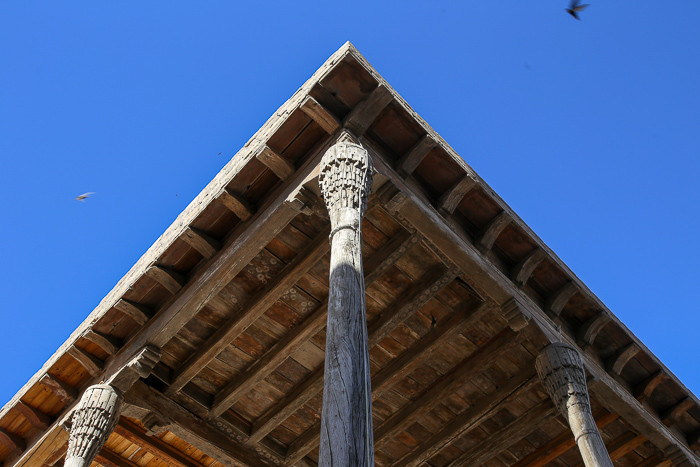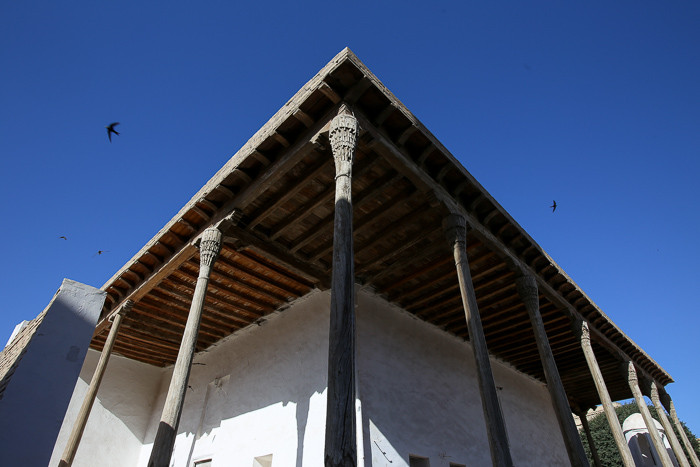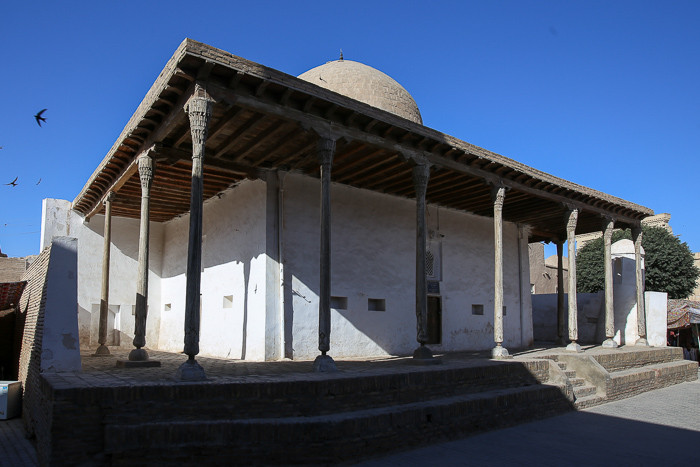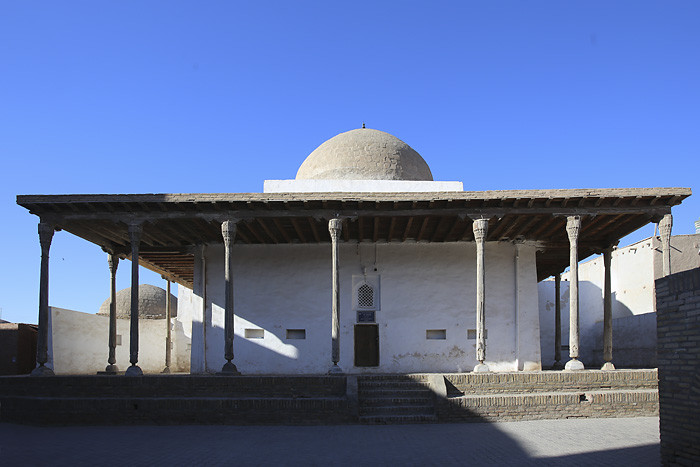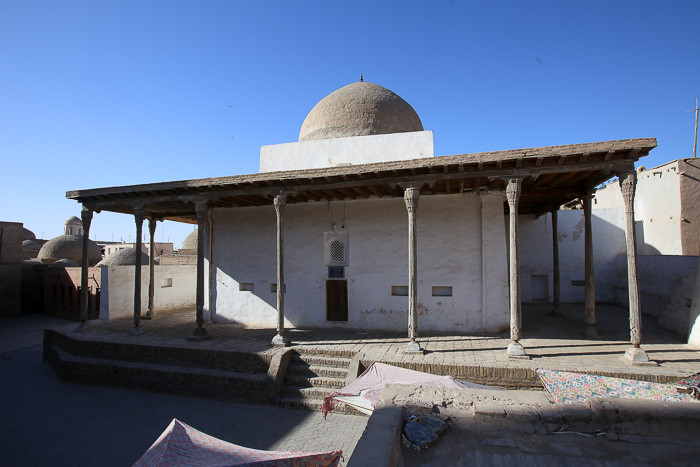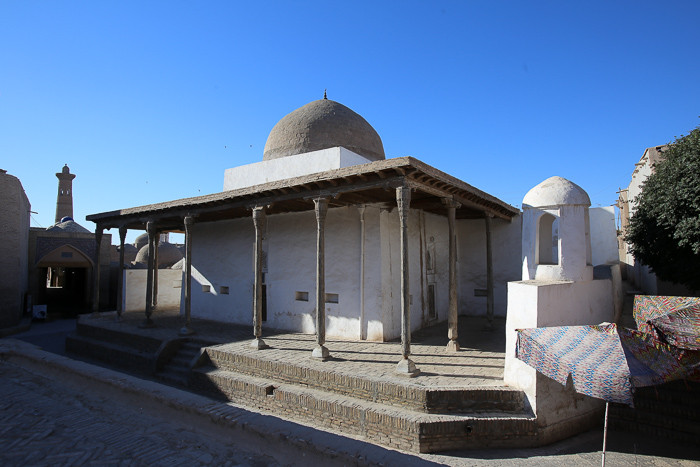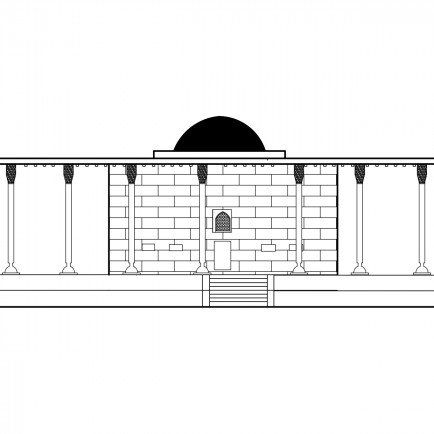Ak Mosque
History
The mosque was likely founded in the 17th century along with the nearby bath house of Anush-Khan, which was completed in 1657 and flanks the prayer hall on two sides. Archeological surveys discovered that the foundations of the mosque extend four meters into the earth, indicating the great care taken in its construction.
Urban and Architectural
The central prayer hall is a rectangular structure capped by a dome. Since this is a district-level mosque, the decorative treatment is quite understated with the dome's masonry seams clearly visible; only the woodwork of the mosque exhibits a high degree of skill. The ground-level portion of the mosque is painted white, giving the building its name. Four small windows, inset with pandjara (gridded lattice work) provide the only source of illumination. On the carved wooden door on the north side of the building are the names Nur Muhammad and Kalandar, the master woodworkers responsible for the door and probably the columns as well. The years 1838 (or 1832) and 1842 are also present, suggesting the door was replaced at that time or possibly the entire mosque. A small, squat minaret stands at the building's northwest corner. It appears something of an afterthought, as its height is less than half that of the domed prayer hall. The mosque is the easternmost building inside the citadel along the Polvon Qori, the main east-west street spanning Khiva's historic inner city, the Ichon Qala. Directly to the east is a domed passage leading out of the city via its east gate.
Description
The Ak Mosque "White Mosque", or Ak-machet, is a small district mosque comprising an interior domed space surrounded by a wrap-around veranda. Its architecture is unique, as most buildings in Khiva feature a single north-facing iwan (open-sided room), or perhaps two set side-by-side, as in the Kuhna Ark citadel. Instead, the iwans of the Ak Mosque extend around three sides of the building, forming a continuous veranda, supported by a number of carved wooden columns. The intent of this design is not clear, though from a practical standpoint it provides a much larger sheltered area for worshipers visiting the mosque.
References
https://www.orientalarchitecture.com/sid/1245/uzbekistan/khiva/ak-mosque
Details
Location
Khiva, Uzbekistan , The approximate location of the site is 41.377308' N, 60.361580' E (WGS 84 map datum).
Year of Build
(built 1838-42)
Drawings
Map
History
The mosque was likely founded in the 17th century along with the nearby bath house of Anush-Khan, which was completed in 1657 and flanks the prayer hall on two sides. Archeological surveys discovered that the foundations of the mosque extend four meters into the earth, indicating the great care taken in its construction.
Urban and Architectural
The central prayer hall is a rectangular structure capped by a dome. Since this is a district-level mosque, the decorative treatment is quite understated with the dome's masonry seams clearly visible; only the woodwork of the mosque exhibits a high degree of skill. The ground-level portion of the mosque is painted white, giving the building its name. Four small windows, inset with pandjara (gridded lattice work) provide the only source of illumination. On the carved wooden door on the north side of the building are the names Nur Muhammad and Kalandar, the master woodworkers responsible for the door and probably the columns as well. The years 1838 (or 1832) and 1842 are also present, suggesting the door was replaced at that time or possibly the entire mosque. A small, squat minaret stands at the building's northwest corner. It appears something of an afterthought, as its height is less than half that of the domed prayer hall. The mosque is the easternmost building inside the citadel along the Polvon Qori, the main east-west street spanning Khiva's historic inner city, the Ichon Qala. Directly to the east is a domed passage leading out of the city via its east gate.
Description
The Ak Mosque "White Mosque", or Ak-machet, is a small district mosque comprising an interior domed space surrounded by a wrap-around veranda. Its architecture is unique, as most buildings in Khiva feature a single north-facing iwan (open-sided room), or perhaps two set side-by-side, as in the Kuhna Ark citadel. Instead, the iwans of the Ak Mosque extend around three sides of the building, forming a continuous veranda, supported by a number of carved wooden columns. The intent of this design is not clear, though from a practical standpoint it provides a much larger sheltered area for worshipers visiting the mosque.


